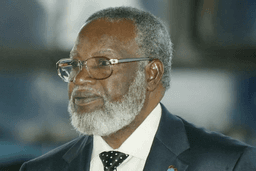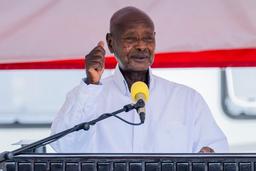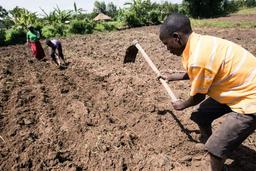Angola
Angola is a country located on the Southwestern coast of Africa bordering Namibia to the south, the Democratic Republic of Congo to the North, and Zambia to the East. It also has a coastline along the Atlantic Ocean.

36.75 Million (2023)

Southwestern Africa

1,246,700 sq km

GMT+01:00

Portuguese

Angolan Kwanza(AOA)

Christianity, Islam

João Manuel Gonçalves Lourenço
Brief
Angola, vast country of southwestern Africa, lies along the Atlantic Ocean between Namibia to the south and the Democratic Republic of the Congo to the north. Its territory extends far inland, encompassing a varied landscape of coastal plains, fertile highlands, and dry savannas. Long home to Bantu-speaking peoples, notably the Ovimbundu, Kimbundu, and Bakongo, Angola was part of thriving regional trade networks that linked Central Africa with the Atlantic world. In the late 15th century, Portuguese explorers first reached the coast, marking the beginning of centuries of European contact, settlement, and exploitation. Over time, Angola became a major source of enslaved Africans forcibly shipped across the Atlantic, particularly to Brazil.
Although Portuguese influence spread gradually inland, many communities maintained a high degree of autonomy until the late 19th and early 20th centuries, when colonial administration consolidated control over the interior. In 1975, following a protracted struggle for independence, Angola emerged as a sovereign nation, but it was soon plunged into a devastating civil war that lasted nearly three decades and involved foreign powers as well as rival domestic factions. Peace was finally achieved in 2002, ushering in a period of reconstruction and economic transformation driven by substantial petroleum and diamond reserves.
Today, Angola is a republic with a rapidly developing economy, though its wealth remains unevenly distributed and infrastructure challenges persist. The capital, Luanda, is a sprawling Atlantic port city and the country’s main commercial hub, known both for its vibrant culture and its stark contrasts of wealth and poverty. Other significant cities include Huambo, situated on the central plateau; Lobito, with its important deepwater port; and Benguela, a historic center of trade.
Angola retains strong cultural traditions, expressed in music genres such as kizomba and semba, and in a rich heritage of dance, cuisine, and storytelling. Portuguese remains the official language, reflecting the colonial legacy, while many national languages are widely spoken. The country’s dramatic landscapes range from the sands of the Namib Desert to the lush rainforests of the north.
Despite the hardships of its recent past, Angola has emerged as one of Africa’s most resource-rich nations, with the potential to play an increasingly influential role in regional affairs. In the words of many who have traveled its expanses, Angola is a land of great promise and resilient spirit—“a country of endless horizons, where history and hope meet.”
Photos and Videos




National anthem
Cultural Life
Cultural milieu
The area that is now Angola has long been a crossroads between Central Africa, southern Africa, and the Atlantic world, and diverse cultural and ethnic groups have migrated through the region and left their mark on it. Beginning in the late 15th century, indigenous Bantu cultures were met with waves of Portuguese explorers, traders, and missionaries who brought with them Christianity and the powerful influence of the Portuguese language and European customs. The growth of the Atlantic slave trade linked Angola closely to Brazil and other parts of the Portuguese Empire, creating deep historical ties that shaped the country’s culture and demography.
Following the abolition of the slave trade in the 19th century, Portuguese colonial expansion intensified in the interior, establishing settlements and plantations that would further entrench European influence. The arrival of Portuguese settlers and administrators in greater numbers during the late colonial period left Angolan society with a strong Lusophone character, and after independence, the persistence of Portuguese as the official language continued to shape national identity.
In the decades since the end of the civil war in 2002, some Angolans have renewed their interest in indigenous cultures and languages, and civic and cultural associations have been formed to promote the study and preservation of local traditions, including Umbundu, Kimbundu, and Kikongo heritage. Angola’s contemporary culture reflects this complex history—a blend of African roots, Portuguese colonial legacies, and modern global influences.
Daily life and social customs
Social life for most Angolans still centres on home and family, which are the foundation of daily life and community. In towns and cities, it is common to see people gathering with friends and neighbours in the evenings to share stories, music, or a simple meal. For men, the sidewalk café or local bar is a popular place to meet, discuss politics, and watch football (soccer) matches on television, which is a favourite national pastime.
Luanda, the bustling capital, offers a variety of modern diversions, including cinemas, restaurants serving Angolan and international cuisine, and shopping in contemporary malls or in traditional open-air markets, where vendors sell everything from fresh produce to crafts and imported goods. Markets are lively hubs of social interaction as well as commerce, and they remain central to urban and rural communities alike.
Angola’s long Atlantic coastline features many beaches, some of them developed with resorts and beach clubs and others open to the public and popular with local families. On weekends, it is common for groups to head to the shore to swim, play football or volleyball, picnic, and enjoy the sea breeze. In Luanda and other coastal towns, the beach is not just a place for leisure but a vibrant part of social life, reflecting Angola’s warm climate and strong communal traditions.
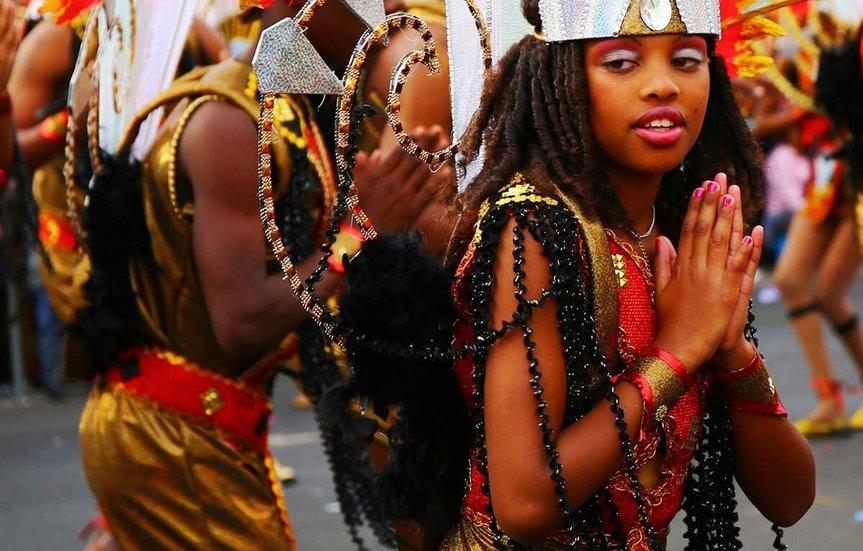




Cuisine
Angolan cuisine has developed a distinct character shaped by centuries of interaction between local culinary traditions and Portuguese influence, and it is gaining recognition among connoisseurs interested in African and Lusophone cooking. Angola’s fertile agricultural regions and long Atlantic coastline provide abundant ingredients for the country’s varied dishes. Fish and seafood, including grouper, mackerel, and shrimp, are staples along the coast, while chicken, goat, and beef are widely consumed inland.
Many meals feature cassava, both as a tuber and as flour used to prepare funge, a smooth, dense porridge that is a national staple and typically served with rich stews. Beans, okra, tomatoes, onions, and leafy greens are commonly used vegetables, and tropical fruits such as mangoes, papayas, bananas, and pineapples are widely enjoyed. Bread, introduced during Portuguese rule, has become an important daily food and is often eaten with soups or stews.
Among Angola’s signature dishes are muamba de galinha, a chicken stew cooked with palm oil, garlic, okra, and sometimes pumpkin leaves, and calulu, a savoury mix of dried fish or meat stewed with vegetables and spices. Grilled meats, or churrasco, are popular at social gatherings, and street vendors often sell kabobs and fried snacks.
Cassava and maize-based porridges are central to meals across the country, reflecting deep-rooted culinary traditions. Angola also has a legacy of Portuguese culinary techniques, including the use of wine and spices in cooking. While wine is produced in small quantities, beer is the most widely consumed alcoholic beverage, and palm wine is popular in some regions.
The national drink is Cuca beer, enjoyed in bars and at gatherings, while strong coffee is often served after meals. Although Angola’s cuisine is shaped by colonial heritage, it remains deeply connected to local tastes and the rhythms of daily life.




Music
Angolan music, shaped by Bantu, Portuguese, and wider African influences, features a rich variety of rhythms and styles that reflect the country’s cultural diversity. Traditional instruments include the dikanza (a scraped bamboo idiophone), marimba (wooden xylophone), kissange (thumb piano), drums of various sizes, and stringed instruments such as the ngoma and viola (guitar). Percussion, always central, provides the heartbeat of Angolan musical expression, especially in dance-oriented genres.
Among Angola’s most celebrated musical forms is semba, a lively, syncopated style characterized by vibrant drumming, call-and-response vocals, and guitar accompaniment. Semba is both a social dance music and a foundation of national identity, and it served as an ancestor of Brazil’s samba during the colonial era’s cultural exchange. Another important genre is kizomba, a smooth, romantic dance music that evolved in the late 20th century by blending semba with Caribbean zouk. Kizomba has since gained international popularity for its sensuous melodies and rhythms.
Other styles include rebita, which draws on European ballroom dance, and kazukuta, a carnival rhythm performed in parades and celebrations. Traditional music is often performed at ceremonies, weddings, and communal gatherings, with elaborate costumes and choreography.
Internationally, Angolan artists such as Bonga, whose soulful voice and semba songs have earned him acclaim across Lusophone Africa and Europe, have become cultural ambassadors. Paulo Flores is also widely admired for his contributions to modern semba and kizomba, often using music to explore themes of history and social change.
Younger Angolans enjoy a variety of contemporary sounds, including kuduro, an energetic electronic dance music that combines African rhythms with techno and hip-hop influences. Kuduro has become a vibrant expression of urban youth culture and is known for its infectious beats and dynamic dance moves.
Gospel is a major genre in Angola, and it plays a big role in both religious life and the music industry. Irmã Sofia – “Zungueira” was Awarded Best Gospel Song at the 2014 Angola Music Awards .




marimba
kuduro
The arts
Angola’s artistic traditions are a rich tapestry woven from indigenous African heritage, Portuguese colonial influences, and the country’s own modern experiences of struggle and rebirth. There is wood Carving among the most celebrated forms of Angolan art, practiced especially by the Chokwe, Lunda, and Mbunda peoples. Masks represent ancestors or spirits and are used in rituals, festivals, and dances.
Dance is central to Angolan culture and accompanies many life events—births, marriages, funerals, harvests. Storytelling, proverbs, and epic poems have been passed down through generations in Bantu languages.
Modern Angolan painters often explore themes of war, memory, and social issues. Artists like António Ole have gained international recognition for work that documents Angola’s transformation. Angola’s film industry is growing, with documentaries and dramas exploring war, reconciliation, and modern life. The arts of Angola are vibrant, diverse, and deeply intertwined with the country’s history and cultural identity. From ancient carvings and masks to modern painting, music, and film, Angola’s creativity continues to evolve and inspire.

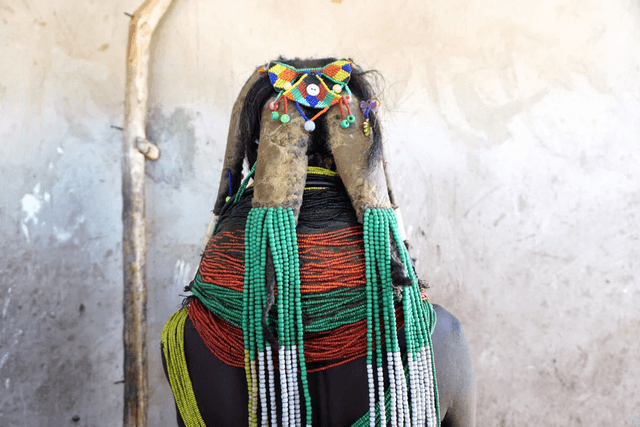



People
Ethnic groups
Angola is composed mainly of Bantu-speaking peoples, including the Ovimbundu, Kimbundu, Bakongo, Chokwe, Mbunda, and a variety of smaller ethnic groups. The largest single group is the Ovimbundu, who traditionally live in the central highlands. The Kimbundu are concentrated in the north-central region around Luanda, while the Bakongo inhabit the north near the border with the Democratic Republic of the Congo.
Some communities, such as the Chokwe and Lunda, historically occupied the eastern interior and are known for their rich artistic traditions and chieftaincy systems. San (Bushmen) hunter-gatherers, who are not Bantu, live in small numbers in the southern regions near the Namibian border.
Centuries of Portuguese colonization, trade, and intermarriage led to the development of a mixed population known as mestiços, who often occupy prominent roles in urban society and commerce. The Portuguese brought enslaved people from other parts of Africa into Angola during the Atlantic slave trade, and the port of Luanda became one of the largest slave-trading centers on the continent.
Following the end of Portuguese colonial rule in 1975, many white settlers left the country, but a small community of Portuguese and other Europeans remained. In the civil war that erupted after independence, large internal migrations took place as people fled fighting in the interior for coastal cities, fundamentally reshaping the country’s demographics.
Over the last several decades, Angola’s major cities, especially Luanda, have grown rapidly, becoming ethnically diverse urban centers where people of different backgrounds mingle and where traditional cultures coexist with modern influences.
Today, Portuguese is the official language and a common medium of communication among groups, but many Angolans continue to speak their ancestral Bantu languages—especially Umbundu, Kimbundu, and Kikongo—which remain vital markers of ethnic identity.





Religion
Angola is a predominantly Christian country. Christianity, including both Catholic and Protestant denominations, is the most widely practiced religion, with estimates suggesting that over 90% of the population identifies as Christian. While traditional African beliefs are still practiced, particularly in conjunction with Christianity, they are a minority religion in terms of formal affiliation. There is also a small Muslim population, with the majority being foreign migrants. The Angolan government constitutionally recognizes religious freedom and prohibits discrimination based on religion. However, religious groups are required to register with the government to operate legally, and the registration process can be lengthy and complex, according to the U.S.

Settlement patterns
Angola is highly urbanized, with most people living in cities, especially the capital Luanda, which houses over a quarter of the population. The coastal areas and central highlands are more densely settled, while the vast interior regions remain sparsely populated. Decades of civil war displaced millions into urban centers, leading to large informal settlements. Many rural areas are still organized around subsistence farming and traditional villages, and some displaced people have returned since peace was restored.

The central highlands of Angola, especially around Huambo and Bié provinces, are among the country’s most densely populated rural areas and serve as cultural heartlands for groups such as the Ovimbundu. Traditional villages are often organized in compact clusters, sometimes situated on hilltops or ridges for strategic and defensive purposes during the civil war years.
Dwellings are typically constructed from mud brick (adobe), wattle and daub, or sun-dried clay, with thatched or corrugated metal roofs. Homes are arranged around courtyards or communal spaces, reflecting strong social ties.
The highlands’ fertile soils and milder climate support a mix of subsistence and cash crops. Key food staples include maize, beans, cassava, sweet potatoes, and vegetables grown on terraced fields or small plots near villages. In addition, many communities cultivate coffee—historically Angola’s main export crop—and fruits like bananas, citrus, and avocados, which are well-suited to the region’s microclimates.
Livestock herding is common, especially goats, pigs, and chickens, which supplement local diets and provide additional income. Some communities also practice seasonal movement of livestock, although large-scale transhumance is less prominent than in parts of North Africa.
In more arid southern regions, such as Cunene and Namibe, semi-nomadic pastoralist groups (like the Herero and Himba) migrate seasonally with their cattle and small stock, establishing temporary encampments of circular huts made from wood, reeds, and mud.
Overall, Angola’s highland and rural settlements are shaped by topography, climate, and a long tradition of small-scale agriculture combined with livestock raising.
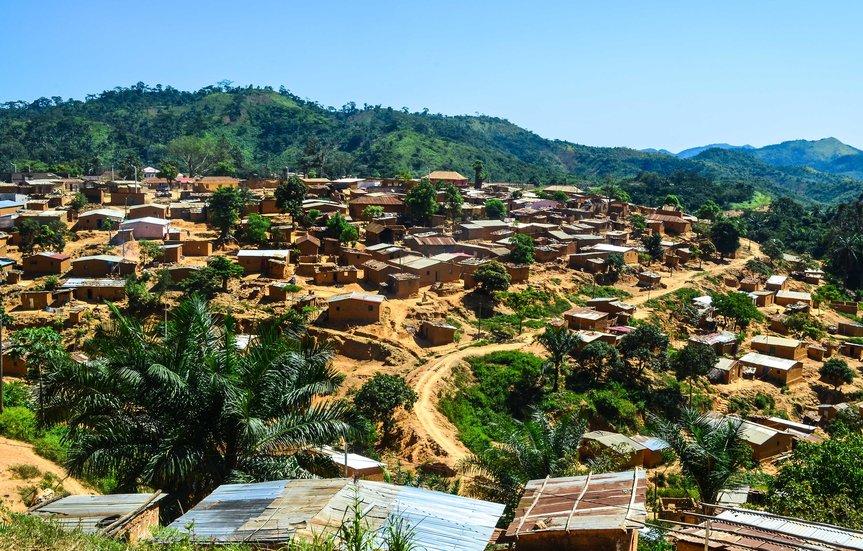
Urban settlement
Angola is highly urbanized, with over 60% of its people living in cities, largely due to mass displacement during the civil war. The capital, Luanda, dominates as the political and economic center, housing more than 8 million residents and surrounded by sprawling informal settlements. Other major urban areas include Huambo, Benguela, Lobito, and Lubango. While post-war reconstruction and oil wealth have driven rapid development, most cities still face severe challenges like overcrowding, inadequate infrastructure, and deep social inequalities.



Demographic trends
Angola has a young and fast-growing population, with a median age of about 16 years and one of the world’s highest birth rates. The country’s population has expanded rapidly since the end of the civil war, now exceeding 35 million people. Urbanization is accelerating, with most Angolans living in cities, especially Luanda. Life expectancy has improved but remains relatively low due to poverty and health challenges. Despite economic growth fueled by oil, high unemployment and inequality persist, and large numbers of people rely on informal work and subsistence farming.
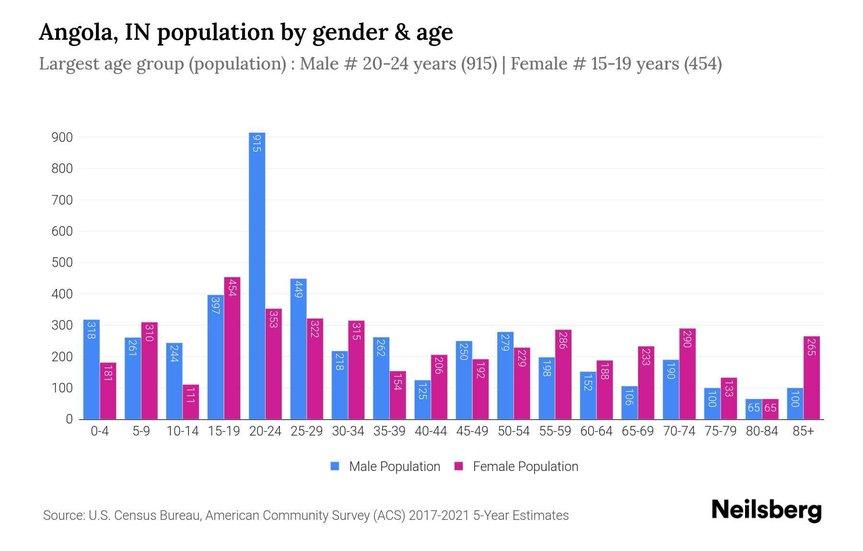
Touristic Cities
Luanda City
Luanda, the capital of Angola, is a port city on the west coast of Southern Africa. A seafront promenade known as the Marginal runs alongside Luanda Bay. Nearby is the well-preserved 16th-century Fortress of São Miguel, which now contains the Museum of the Armed Forces. The fort has views of the harbor and the Ilha do Cabo, a long, thin peninsula in the bay that’s home to beaches, bars and restaurants.



Benguela
Benguela is a city in western Angola, capital of Benguela Province. Benguela is one of Angola's most populous cities. It is a scenic coastal city famous for beautiful beaches like Baía Azul and Baía Farta. Offers a relaxed atmosphere, colonial buildings, and nearby salt flats and fishing villages.
Lubango
Located in the south, set in the highlands with cooler temperatures.
It is known for the Tundavala Gap (spectacular escarpment views), the Serra da Leba road, and the Christ the King statue.




Namibe
Namibe is a province and a city in southwestern Angola. The city, formerly known as Moçâmedes, is located on the coast and is the capital of Namibe Province. The province itself was formerly known as Moçâmedes District under Portuguese rule. Namibe is known for its coastal landscapes, including beaches like Praia do Lobo, and is also a gateway to Iona National Park and the Tundavala Fissure. A port city bordering the Namib Desert famous for desert landscapes, beaches, and proximity to Iona National Park.
Accomodation
Guest houses
Guest houses in Angola are a popular alternative to hotels, especially for travelers looking for affordable, local, and often more personal accommodation. They are found in both urban and rural areas, though quality and availability can vary.

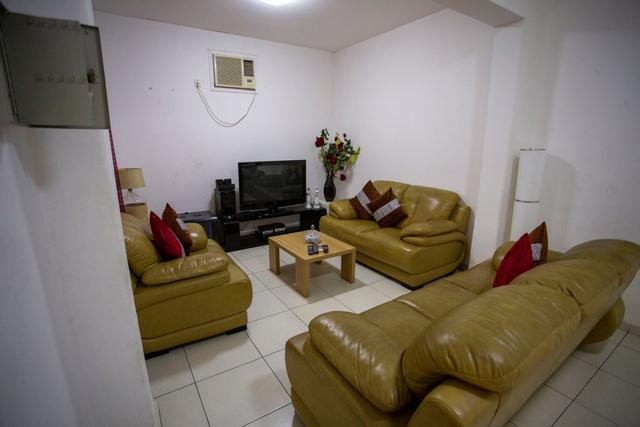


Hotels and resorts
Angola has a growing selection of hotels and resorts, especially in major cities and along the coast. Luanda offers the widest range, from luxury international brands and modern business hotels to mid-range and budget accommodations. Coastal cities like Benguela, Lobito, and Namibe feature beachfront resorts popular with tourists seeking sun and relaxation. In the highlands, cities such as Lubango have comfortable hotels catering to travelers exploring natural attractions like the Tundavala Gap. While standards are improving, prices can be high—especially in Luanda—and advance booking is recommended. Many hotels provide amenities such as restaurants, conference facilities, and airport transfers, but service quality can vary.



Riads
Angola does not have riads, as riads are traditional Moroccan houses built around an interior courtyard. Angola’s architecture and guest accommodations are different, focusing instead on hotels, guest houses, and modern lodges. If you are looking for traditional or boutique-style stays in Angola, you’ll mainly find small guest houses, pousadas, or eco-lodges, but not riads.


Campings
Camping in Angola is possible but not widely developed, and is mostly suited for adventurous travelers. There are a few designated campsites near national parks, beaches, and scenic highland areas—particularly in regions like Namibe, Iona National Park, Kissama National Park, and Lubango. Facilities range from basic to semi-equipped, with some offering toilets, water, or fire pits, but many sites are informal and remote, requiring self-sufficiency. Wild camping is common in rural or natural areas, but always seek local guidance and permissions. Angola’s landscapes—coastal dunes, savannahs, waterfalls, and mountains—make it appealing for eco-tourism and 4x4 camping tours.


Requirements for Visa
Documents to be submitted for your application
- Completed Visa Application Form
- Passport
- Passport Photos
- Flight Itinerary
- Hotel Reservation or Proof of Accommodation
- Proof of Sufficient Funds
- Invitation Letter (if applicable)
- Yellow Fever Vaccination Certificate
- Travel Insurance (recommended)
- Visa Fee Payment Receipt
At the time of visa issuance, please provide the following documents
- Original Passport
- Visa Application Receipt
- Proof of Payment of Visa Fees (if not already provided)
- Yellow Fever Vaccination Certificate
- Recent Passport Photos
- Flight Itinerary
- Hotel Reservation or Invitation Letter
Useful links
- Ministry of Foreign Affairs of Angola
- Embassy of Angola in the United States
- Consulate General of Angola in Lisbon
- eVisa Angola (Official e-visa Portal)
- World Health Organization Angola Profile
- CDC Angola Travel Health
- Angola Tourism Official Page
- Lonely Planet Angola Overview
Economy of Angola
Agriculture, forestry, and fishing
Agriculture in Angola employs a large share of the population but is mainly subsistence-based, with smallholders growing cassava, maize, millet, and beans. Coffee, once a major export, is being revived alongside crops like cotton and sugarcane. The country has vast forestry resources, including valuable hardwoods, though logging faces challenges from poor infrastructure and regulation. Fishing is important both for domestic food supply and exports; Angola has rich coastal waters yielding sardines, mackerel, and tuna. Despite abundant natural resources, the sectors still suffer from war damage, limited investment, and underdeveloped processing facilities. Angola's economy is heavily reliant on oil, but the agriculture, forestry, and fishing sectors play a significant role, contributing 14.9% to the country's GDP in 2023. While the country has abundant natural resources, including arable land and forests, the sector faces challenges like low productivity, reliance on food imports, and the impact of war and lack of investment.

Resources and power
Angola is rich in natural resources, especially oil, which is the backbone of its economy and one of Africa’s top producers. The country also has significant natural gas reserves, large deposits of diamonds, and minerals like iron ore, phosphates, and gold. Hydroelectric power from rivers such as the Kwanza provides most of Angola’s electricity, though access to reliable power remains limited in rural areas. Despite abundant resources, economic diversification is still a challenge, and infrastructure rebuilding continues after decades of conflict.
Manufacturing
Manufacturing in Angola is still small and underdeveloped, heavily affected by decades of civil war. The sector mainly produces food products, beverages, textiles, cement, and construction materials to supply the domestic market. Since peace returned, the government has promoted investment to rebuild factories, reduce reliance on imports, and create jobs. Oil refining and basic chemical production also play a role, but challenges like limited infrastructure, high costs, and shortages of skilled labor have slowed growth.
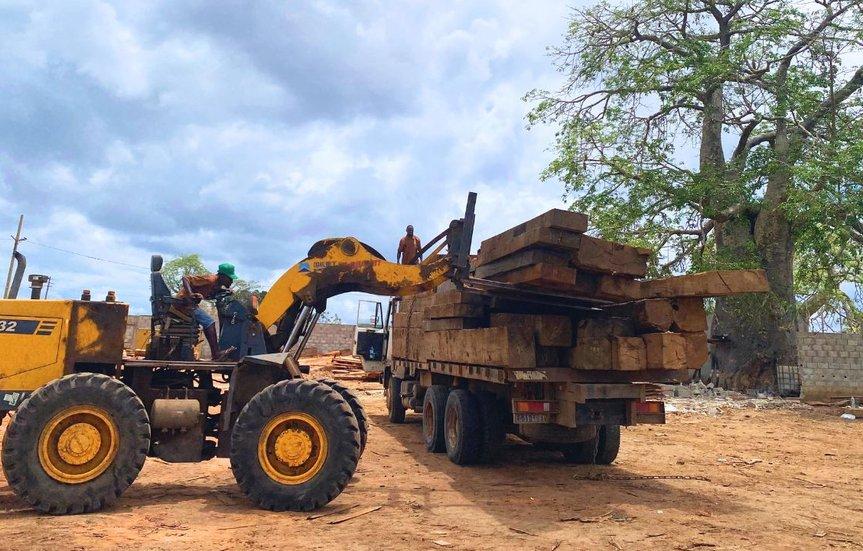
Finance
Angola’s financial sector is centered in Luanda and dominated by state-owned and private banks, which handle most transactions linked to oil revenues. The central bank (Banco Nacional de Angola) regulates monetary policy and oversees the kwanza currency. After years of high inflation and currency devaluation, reforms have aimed to stabilize the banking system and attract foreign investment. Access to credit outside major cities is limited, and many people rely on informal financial networks. Despite challenges, Angola has expanded electronic payments and is working to modernize its financial infrastructure.

Trade
Angola's trade sector is a vital driver of its economy, accounting for around 67% of GDP, with a strong trade surplus fueled predominantly by oil. Angola's trade is heavily reliant on its oil and gas industry, with crude oil being the dominant export. China is its primary trading partner, both for exports and imports. Angola also exports diamonds and imports a variety of goods, including refined petroleum, wheat, and vehicles.

Labour and taxation
Angola’s labour market is characterized by high youth unemployment and a large informal sector, though oil and construction have created some formal jobs. The government sets a statutory minimum wage, which varies by sector, and regulates working hours, contracts, and social security contributions. Skilled labour shortages are common, leading many companies to hire expatriates.
In taxation, Angola has a progressive personal income tax and a corporate income tax (currently 25% for most businesses). A Value-Added Tax (VAT) of 14% applies to goods and services. The country also collects taxes on oil and diamond production, which generate the bulk of government revenue. Recent reforms have aimed to modernize tax administration, broaden the tax base, and reduce dependence on oil revenues.

Transportation and telecommunications
Angola's transportation and telecommunications infrastructure is undergoing significant development, with a focus on modernization and expansion to support economic growth and regional integration. While the country has a history of strong transportation networks, particularly railways, the civil war caused significant damage. Now, Angola is actively working to rehabilitate and expand its transportation infrastructure, including roads, railways, ports, and airports, with a strong emphasis on public-private partnerships (PPPs). Telecommunications is also experiencing rapid growth, with increasing mobile penetration and internet access, playing a crucial role in Angola's socioeconomic development. Angola has three main railway lines: the Luanda (CFL), Benguela (CFB), and Moçâmedes (CFM) lines. The government is actively working to rehabilitate these lines and connect them with new lines, including the Lobito Corridor, a key regional trade route. Angola has a relatively extensive road network, with a focus on improving connectivity between provinces and with neighboring countries. Angola has several important ports, including Luanda, Cabinda, and Namibe, which are being upgraded to handle increased traffic and support regional trade. Angola is investing in the expansion and modernization of its airports, including the new Luanda Airport, and improving air transportation capacity. Mobile phone penetration has significantly increased in recent years, with strong growth in mobile internet access. Angola is investing in expanding and modernizing its telecommunications infrastructure, including fiber optic cables and mobile networks.
Latest News in Angola
Politics
The first president of independent Namibia, Sam Nujoma, has died at the age of 95 in the capital Windhoek, the country's current leader has announced.
Politics
Ugandan President Yoweri Museveni has officially announced his intention to seek re-election in the 2026 presidential race, extending his nearly four-decade rule. Museveni, who has been in power since 1986, is once again positioning himself as the steady hand guiding Uganda through challenges. His decision has sparked mixed reactions, with supporters praising his leadership and longevity, while critics call for fresh leadership and political reform. As the nation looks ahead to the 2026 elections, Uganda braces for a heated political contest.
Politics
Peace Agreement with DRC Rwanda and the Democratic Republic of Congo (DRC) signed a U.S.-brokered peace deal aimed at ending conflict and promoting regional trade. Rwanda agreed to stop supporting armed groups like M23 rebels, though it denies involvement. Tensions remain, and President Kagame is cautious about whether the peace will last.
Wildlife
Tanzania has announced that all foreign tourists visiting Mainland Tanzania will be required to purchase a mandatory travel insurance policy upon arrival, beginning January 2026. The new regulation, issued by the Ministry of Finance on July 4, 2025, is part of the government reforms in the country’s 2025/26 financial year agenda. According to the notice, the measure will apply to all non-citizens, with the exception of visitors from countries that are part of the East African Community (EAC) and the Southern African Development Community (SADC). Citizens from these regions will continue to be exempt from the requirement.
Environment
In light of the growing food insecurity crisis across many African nations, heads of state and agriculture experts gathered in Nairobi, Kenya, this week to discuss solutions to address food shortages, especially in regions severely affected by climate change, political instability, and economic challenges. The two-day summit, titled “Agriculture and Climate Resilience: A Pan-African Strategy”, brought together government officials, NGOs, scientists, and international organizations to create a comprehensive strategy to improve agriculture, nutrition, and sustainable food systems across the continent.
Tech & Science
In 2025, Artificial Intelligence (AI) isn’t just a futuristic buzzword - it’s the secret weapon behind some of the world’s most successful content creators. From bloggers and YouTubers to podcasters and marketers, AI-powered tools are changing the way we brainstorm, write, design, and edit. If you've ever struggled with writer’s block, lacked design skills, or wished for faster content creation - AI might be your best assistant yet. Here’s how AI is revolutionizing the creative industry and how you can use it to boost your projects.
